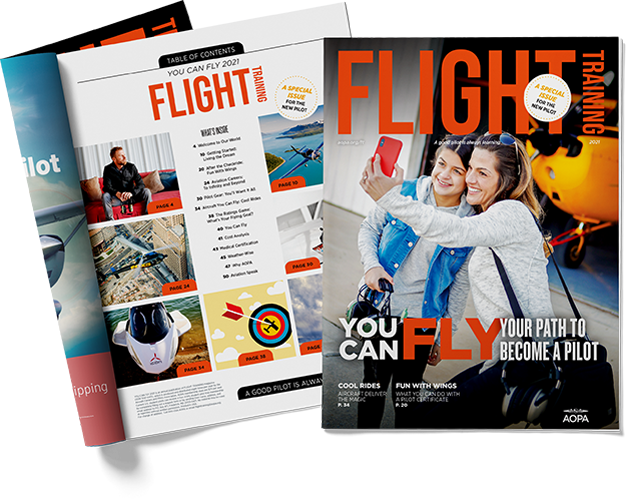Other Ratings and Endorsements
Multiengine Rating
The multiengine rating is a huge step in any pilot’s career. As a result, the vast amount of information would be unrealistic to cover in this report, which is meant to serve as an overview of ratings and endorsements. To read the Practical Test Standard for multiengine ratings, please follow this link.
Additional Class Ratings — Airplane
The procedures for adding a class rating for the airplane category, like the single-engine land or sea, and the multiengine land or sea, are covered under 14 CFR 61.63(c). This regulation pertains to those who already hold a pilot certificate.
If you already hold an airplane, rotorcraft, powered-lift, or airship rating, you will not need to take an additional knowledge test, provided you're adding a class rating at that pilot certificate level. There are also no minimum flight time requirements for adding a class rating. Your instructor will determine when you are proficient before signing you off for the checkride.
You will need two endorsements from an instructor in your logbook or training record; one that attests to your competency in the aeronautical knowledge areas, and the other your proficiency in the areas of operation, both appropriate to the pilot certificate for the aircraft class rating sought.
Finally, you must pass the required checkride appropriate to the pilot certificate for the aircraft class rating sought.
You need not meet the specified training time requirements of part 61 that apply to your pilot certificate for the aircraft class rating sought unless you hold a lighter-than-air category rating with a balloon class rating and are seeking an airship class rating.
Tailwheel Airplane Endorsement
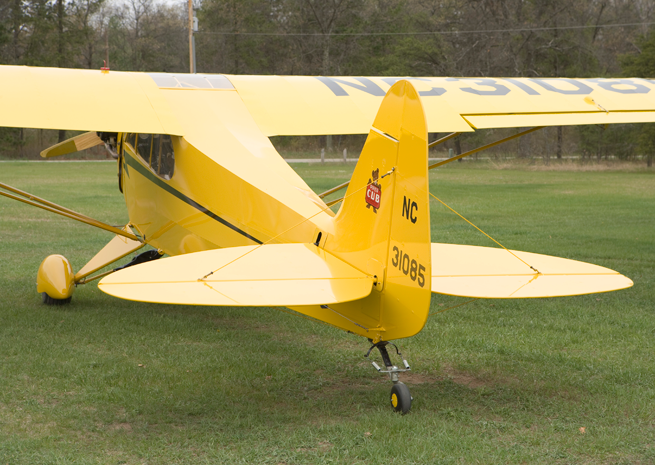 The tailwheel endorsement does not require a minimum number of flight hours to obtain, and can possibly be accomplished efficiently and safely within a few hours of flight training. CFR 61.31(i) does, however, require at least certain maneuvers and procedures be performed:
The tailwheel endorsement does not require a minimum number of flight hours to obtain, and can possibly be accomplished efficiently and safely within a few hours of flight training. CFR 61.31(i) does, however, require at least certain maneuvers and procedures be performed:
Normal and crosswind takeoffs and landings.
Wheel landings (landing on the main gear while holding the tail off the ground — check for manufacturer recommendations against such landings).
Go-around procedures.
Your instructor might require additional maneuvers or procedures be performed in order for you to demonstrate proficiency in a tailwheel airplane. These maneuvers might include stalls, steep turns, emergency maneuvers and procedures, etc.
Once your instructor has determined that you're proficient in the operation of a tailwheel airplane, he or she will endorse your logbook. AC 61-65 provides guidance on various types of endorsements, so your instructor might choose to endorse your logbook with the following:
I certify that (First name, MI, Last name), (pilot certificate), (certificate number), has received the required training of CFR 61.31(i) in a (make and model of tailwheel airplane). I have determined that he/she is proficient in the operation of a tailwheel airplane.
S/S [date] J.J. Jones 987654321CFI Exp. 12-31-19
The training and endorsement required to operate a tailwheel airplane is not required if you logged pilot-in-command time in a tailwheel airplane before April 15, 1991.
Complex Airplane Endorsement
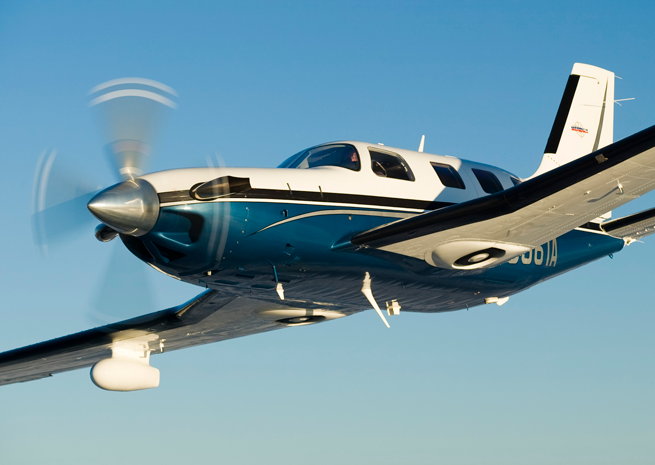 A complex airplane is defined by 14 CFR 61.31(e) as an airplane that has the following:
A complex airplane is defined by 14 CFR 61.31(e) as an airplane that has the following:
Retractable landing gear
Flaps
Controllable pitch propeller
For seaplanes — just flaps and a controllable pitch propeller
Prior to August 1997, a separate requirement to operate as pilot in command in a "complex" airplane didn't exist under part 61 and was considered to be part of the high-performance criteria. Today, a separate endorsement is required for each operating privilege.
There are no minimum number of flight hours required to obtain a complex endorsement, although you will be required to receive and log ground and flight training from an authorized instructor in a complex airplane, or in a flight simulator or flight training device that is representative of a complex airplane, and have been found proficient in the operation and systems of the airplane.
Once you've met these requirements, your instructor will provide you a one-time endorsement that might appear like the following from AC 61-65:
I certify that (First name, MI, Last name), (pilot certificate), (certificate number), has received the required training of 14 CFR 61.31(e) in a (make and model of complex airplane). I have determined that he/she is proficient in the operation and systems of a complex airplane.
S/S [date] J.J. Jones 987654321CFI Exp. 12-31-19
The training and endorsement required for operating a complex airplane as pilot in command is not required if you logged flight time as pilot in command of a complex airplane (by today's definition), or in a flight simulator or flight training device that is representative of a complex airplane prior to August 4, 1997.
High-Performance Endorsement
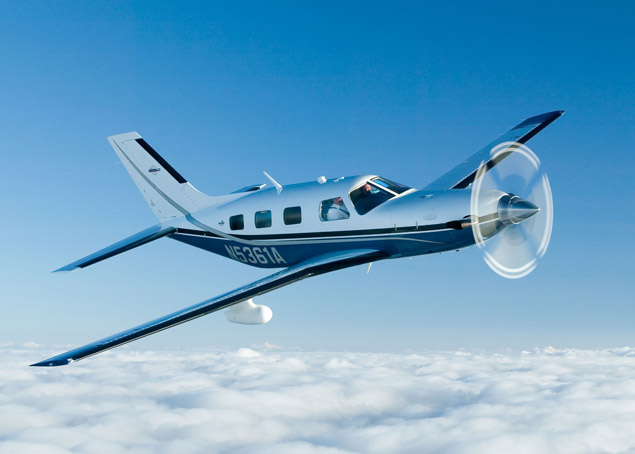 Here's one that often draws attention from AOPA members due to the historical changes of this definition. 14 CFR 61.31(f) presently defines a high-performance airplane as an airplane with AN ENGINE of MORE THAN 200 horsepower. Notice the emphasis on the engine, not the airplane, and the fact that the engine must exceed 200 hp, not just meet it. This means that aircraft having an engine of only 200 hp do not qualify under this definition.
Here's one that often draws attention from AOPA members due to the historical changes of this definition. 14 CFR 61.31(f) presently defines a high-performance airplane as an airplane with AN ENGINE of MORE THAN 200 horsepower. Notice the emphasis on the engine, not the airplane, and the fact that the engine must exceed 200 hp, not just meet it. This means that aircraft having an engine of only 200 hp do not qualify under this definition.
In order to join the ranks of qualified pilots flying Bonanzas, 182s, Piper 6s, and other high-performance airplanes, you will need to receive and log ground and flight training from an authorized instructor in a high-performance airplane, or in a flight simulator or flight training device that is representative of a high-performance airplane, and have been proficient in the operation and systems of the airplane.
Once you've met these requirements, your instructor will provide you a one-time endorsement that might appear like the following from AC 61-65:
I certify that (First name, MI, Last name), (pilot certificate), (certificate number), has received the required training of 14 CFR 61.31(f) in a (make and model of high performance airplane). I have determined that he/she is proficient in the operation and systems of a high performance airplane.
S/S [date] J.J. Jones 987654321CFI Exp. 12-31-19
The training and endorsement required for operating a high-performance airplane as pilot in command is not required if you logged flight time as pilot in command of a high-performance airplane, or in a flight simulator or flight training device that is representative of a high-performance airplane prior to August 4, 1997. — AOPA's subject report, " Transitioning to High-Performance Airplanes."
High-Altitude Endorsement
Pilots often misunderstand the high-altitude endorsement. According to 14 CFR 61.31(g), the endorsement is NOT required to operate as pilot in command of every pressurized aircraft. Pressurized aircraft, according to part 61, is defined as a pressurized aircraft that has a service ceiling or maximum operating altitude, whichever is lower, above 25,000 feet msl.
Prior to receiving your high-altitude endorsement, you will need to receive and log ground and flight training from an authorized instructor. The ground training must include at least the following subjects:
- High-altitude aerodynamics and meteorology.
- Respiration.
- Effects, symptoms, and causes of hypoxia and any other high-altitude sickness.
- Duration of consciousness without supplemental oxygen.
- Effects of prolonged usage of supplemental oxygen.
- Causes and effects of gas expansion and gas bubble formation.
- Preventive measures for eliminating gas expansion, gas bubble formation, and high-altitude sickness.
- Physical phenomena and incidents of decompression.
- Any other physiological aspects of high-altitude flight.
After meeting the ground training requirements, the instructor who provided the ground training will make an endorsement in your logbook or training record certifying that you have satisfactorily accomplished the ground training.
To meet the flight training requirements, you will need to receive and log training from an authorized instructor in a pressurized aircraft (remember the definition of a pressurized aircraft), or in a flight simulator or flight training device that is representative or a pressurized aircraft. The flight training must include at least the following subjects:
- Normal cruise flight operations while operating above 25,000 feet msl.
- Proper emergency procedures for simulated rapid decompression without actually depressurizing the aircraft.
- Emergency descent procedures.
Once you've met the flight training requirements and your instructor determines that you are proficient in the operation of a pressurized aircraft, he or she will endorse your logbook or training record. The following sample from AC 61-65 may be used:
I certify that (First name, MI, Last name), (pilot certificate), (certificate number), has received the required training of 14 CFR 61.31(g) in a (make and model of pressurized aircraft). I have determined that he/she is proficient in the operation and systems of a pressurized aircraft.
S/S [date] J.J. Jones 987654321CFI Exp. 12-31-19
The training and endorsements required to obtain a high-altitude endorsement under 61.31(g) are not required if you can document satisfactory accomplishment of any of the following in a pressurized aircraft, or in a flight simulator or flight training device that is representative of a pressurized aircraft:
- Serving as pilot in command before April 15, 1991.
- Completing a pilot proficiency check for a pilot certificate or rating before April 15, 1991.
- Completing an official pilot-in-command check conducted by the military services of the United States.
- Completing a pilot-in-command proficiency check under part 121, 125, or 135 conducted by the Administrator or by an approved pilot check airman.
Read more in AOPA's subject report, " High-Altitude Flying."
Glider Endorsement
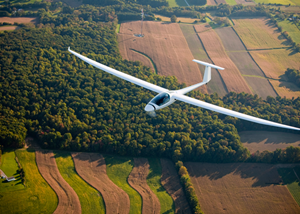 This is not to be confused with the glider category rating that is obtained under part 61. The glider endorsements discussed here are supplemental to the glider category rating and allow you, the glider pilot, to operate as pilot in command of a glider using one of the following procedures list in 14 CFR 61.31(j):
This is not to be confused with the glider category rating that is obtained under part 61. The glider endorsements discussed here are supplemental to the glider category rating and allow you, the glider pilot, to operate as pilot in command of a glider using one of the following procedures list in 14 CFR 61.31(j):
Ground-tow procedures
Aero-tow procedures
Self-launch procedures
Obtaining these privileges will require that you satisfactorily accomplish ground and flight training on the specific procedures and operations for the privilege you wish to obtain.
After meeting the training requirements for the specific procedure, you'll receive a logbook endorsement from an authorized instructor who certifies that you have been found proficient in those specific procedures and operations.
The holder of a glider rating issued prior to August 4, 1997, is considered to be in compliance with the training and logbook endorsement requirements for the specific operating privilege for which the holder is already qualified.
You Can Fly !
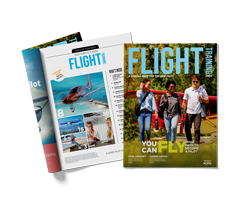
This beginning pilots' resource guide explains what you can expect from your introductory flight through initial training— and how to turn your dream of flying into reality. Simply enter your name and email address.
